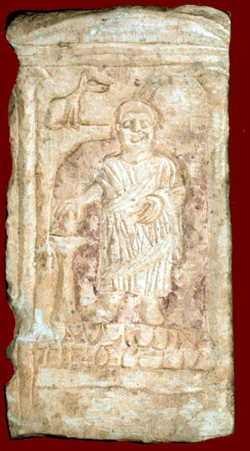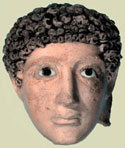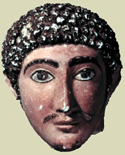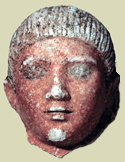|
Memory
Last photograph of Cavafy, taken just before his death in 1933.
S.N.H.
|
|
Limestone funerary stela
Terenouthis, Egypt
2nd–4th century AD
Kelsey Museum 21077
 |
|
For Ammonis, Who Died at 29, in 610
Raphael, they’re asking you to write a few lines
as an epitaph for the poet Ammonis:
something very tasteful and polished. You can do it,
you’re the one to write something suitable
for the poet Ammonis, our Ammonis.
Of course you’ll speak about his poems—
but say something too about his beauty,
about his subtle beauty that we loved.
Your Greek is always elegant and musical.
But we want all your craftsmanship now.
Our sorrow and our love move into a foreign language.
Pour your Egyptian feeling into the Greek you use.
Raphael, your verses, you know, should be written
so they contain something of our life within them,
so the rhythm, so every phrase clearly shows
that an Alexandrian is writing about an Alexandrian.
Trans. Edmund Keeley and Philip Sherrard
|
|
|

Plaster funerary mask of a
young boy
Egypt
Roman, 2nd century AD
Kelsey Museum 88243
|

 |
Plaster funerary mask of a bearded man
Egypt
Roman, 2nd century AD
Kelsey Museum 88236
Plaster funerary mask of a beardless man
Fayum, Egypt
Roman, AD 117–138
Kelsey Museum 1874 |
Tomb of the Grammarian Lysias
In the Beirut library, just to the right as you go in,
we buried wise Lysias, the grammarian.
The spot is beautifully chosen.
We put him near those things of his
that he remembers maybe even there:
comments, texts, grammars, variants,
voluminous studies of Greek idioms.
Also, this way, as we go to the books,
we’ll see, we’ll honor his tomb.
Trans. Edmund Keeley and Philip Sherrard |
|
|
|
|